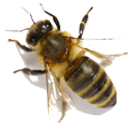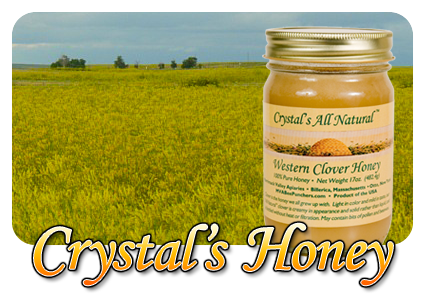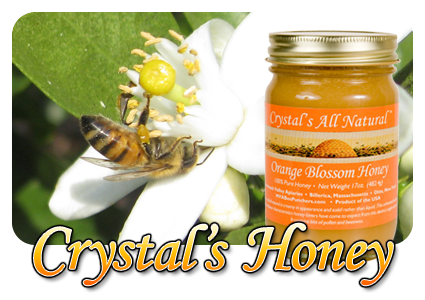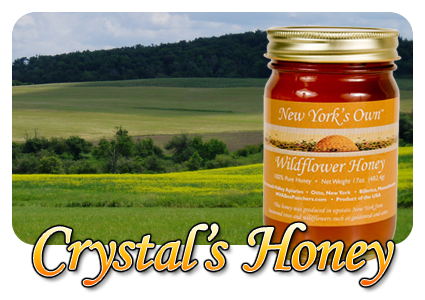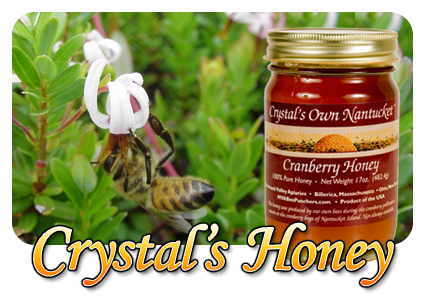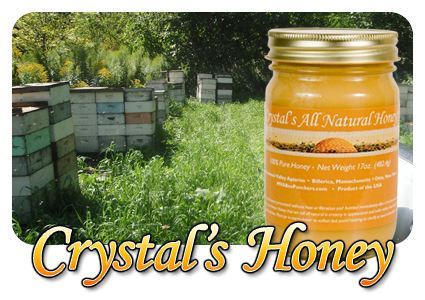All About Honey
Honey is the natural sweet substance produced by honey bees from the nectar of plants which bees collect and transform by substance of their own, deposit, dehydrate and store in the honeycomb.
Honey is the result of the co-evolution of honeybees and flowering plants. Over the course of the millennia, trees and flowering plants have modified their leaves to become the petals of flowers and developed nectarines in an effort to attract honeybees to physically accomplish the pollen transfer necessary for their reproduction. For many species of plants, pollen attractiveness alone is sufficient cause to lure the honeybee visit. But even in these cases, leaf modification in color, number and orientation evolved in response to the honeybees vision and sense of smell.
Plants that offer nectar as well as pollen have an evolutionary advantage in the competition among flowers to achieve pollination from a relatively limited number of insects. Some examples include economically important crop plants like almonds, apples, blueberries and cranberries.
Nectar then contains sugar which becomes the attractant for the honeybee. The excessive water content of the nectar leaves it unstable in nature. Honey results when honeybees reduce the moisture of nectar to approximately 18%, a point at which honey can last indefinitely.
Killer Fall/Winter Dessert Tray
Feel a cold in your future?
Winter Grilled Beef or Pork
3/4lb meat: 2 tbsp. balsamic vinegar, 1 tbsp. Crystal’s Blueberry honey, 1 tbs. virgin olive oil, 1/2 tsp. sea salt, some grinds of black pepper.
Put ingredients in a big ceramic or glass bowl, large enough to receive the meat hot off the grill. Whisk. If using beef, add 3 fingers (sprigs about 3″ long) of fresh rosemary cut up with scissors, so the spice releases into the sauce.
If using pork or chicken, cut up with shears about 10 sprigs of fresh cilantro into the sauce. Cut your meat into 1.5-inch cubes, cut up some onions in chunks – skewer meat and onions. Grill on charcoal or gas grill. When done use a fork and pull HOT meat off the skewers into the bowl with the sauce (meat will sizzle) and toss/stir so meat is flavored – serve immediately with roasted almond pilaf or roasted potatoes and steamed kale.
Why is honey better for you than corn syrup or cane sugar? The main advantages are its major sugar components. Fructose and glucose are in a sense predigested by the bees and can be absorbed directly into the blood to provide a rapid and prolonged source of energy. In other words the absorption of honey vs. corn/cane syrup is more efficient.
* Cran e, Eva. Honey: A Comprehensive Survey. London:Heinemann, 1975. p.253.
“What do I do with another jar of honey?”
It’s OK to own more than one jar of honey at a time!
Here is what to do with the jar of honey you already have so you will put it on your list to buy another jar of honey… and another and another…
- Put honey in your tea – hot or cold – black, green, or white.
- Put honey in your coffee in the morning.
- Put honey on your ice cream at night.
- Put honey in your chai.
- Put honey on your toast, or on your cereal.
- Make a trench in your cream cheese on the bagel and add honey.
- Be Greek – put it in your plain yogurt.
- Any time of the day or night.
- Make a peanut butter and honey sandwich for lunch.
- If you use Crystal’s All Natural honey, you won’t have to eat over the kitchen sink, because this honey stays where you put it!
- Mix Orange Blossom honey with room temperature sour cream and pout on sliced strawberries, bananas, or other fruit for a mysteriously delicious dessert, whipped cream optional.
- Eat honey by the teaspoon out of the jar – it beats commercially produced corn syrup based candy, hands down. It satisfies instantly – ask your resident Pooh Bear!
- Put out sliced apples, sliced cheddar cheese, walnuts and honey for an after school snack.
- Mash an orange around on the table, cut a hole in one end, stab the knife around inside, being careful NOT to puncture the skin, pour in some Crystal’s Cranberry or Crystal’s Wildflower and hand it to your kid for an after school snack. They will suck all the juice out, and then eat it all except for the peel. Have one yourself. It’s the Original Chewable Vitamin C!
